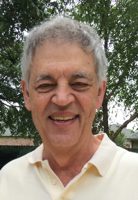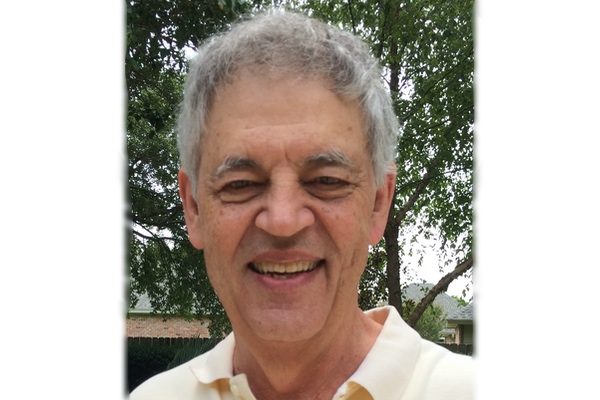Creative Longevity as a Desire for the Unobtainable
By Ronald J. Pelias, WTP Guest Writer
 With a wrinkled wave of years washing over me, I wonder why I am still trying to create, still trying to make words do what I would like them to do. You’d think that after all these years of effort I have might have gotten it down, but, of course, I haven’t, not even close. In this brief piece, I provide a tentative answer to what accounts for my creative longevity by offering writing fragments, those slippery shards that slice their way into some semblance of an organizational logic. As I do so, I circle and probe how nagging questions push me on, keep me working for the unobtainable.
With a wrinkled wave of years washing over me, I wonder why I am still trying to create, still trying to make words do what I would like them to do. You’d think that after all these years of effort I have might have gotten it down, but, of course, I haven’t, not even close. In this brief piece, I provide a tentative answer to what accounts for my creative longevity by offering writing fragments, those slippery shards that slice their way into some semblance of an organizational logic. As I do so, I circle and probe how nagging questions push me on, keep me working for the unobtainable.
~
1.
Buried in one of my journals is an entry that offers what sculptor Henry Moore said when asked by poet Donald Hall (1993) about the secret of life:
The secret of life is to have a task, something you devote your entire life to, something you bring everything to, every minute of the day for your whole life. And the most important thing is–it must be something you cannot possibly do! (pp. 53-4).
I keep returning to Moore’s often cited words, and I keep sharing them with my students, even though they might seem a bit overblown. Reading them again and again, I am always taken by how accurately they capture my sense of my daily work. They’ve earned a position of explanatory power in my consciousness, a position that lets me find comfort in my failures.
2.
The writing process operates as an ongoing search for answers: What does this particular piece demand? How might I make it happen? What are the best choices I have to create the piece I want? Or, more broadly, how might I break from my predictable and exhausted style? Such questions set an agenda that I attempt to satisfy. I deem a piece finished or abandoned when I have an answer, but:
Answers are seldom as satisfying as questions.
Answers suggest endings, but all accounts end in the middle.
Answers shift; once found you can begin to hear their rumblings.
Answers simplify in the same way rainbows promise hope.
Answers, more often than not, fail to understand their limits.
Answers greatest use is how they might splinter into questions.
Answers are the death knell of art.
Without answers, I move toward story. With answers, I doze on the couch.
3.
In his essay, “The Necessity of Failure,” Kevin Wilson (2017) asserts, “That’s all I want out of my artistic life. To fail better than the last time” (p. 31). Alan Shapiro (2007) makes a similar point:
… the trick about growing as a writer is that you always have to be at the beginning of your career. You always have to be redefining the limits of what you’re trying to do. You always have to be a student, growing but not abandoning anything you’ve learned along the way but by adding to it. (p. 13)
I write because I take pleasure in my role as a lifelong apprentice. I will never become a master of language, never exhaust its possibilities. I write for the questions that emerge. I write because I can always find more ways to move words about on the page, more ways to reach toward the unobtainable, more ways to put new tricks in my bag.
4.
With apologies to e e cummings, a poem for the question why:
On the Origins of Why
Its struggles with is are well documented
by tribes and their holy and unholy leaders
whose obsessive pointing—there, there, there—
were always trying to make something out of that.
Just because never stood a chance.
Why’s cause was always proof or faith—
easy prey for those who knew just where
they wanted to be before they began.
Its cousin, motive, adjectived its way
into explanation and established a who
who waits always wanting an ever present
and always wondering what it’s all about.
This stands and falls on why’s is.
It lives on whims and wishes of is’s why.
5.
Louise Glück (2000) says an artist is a “person whose sense of self absolutely depends on continued creation” (p. 106). Without a consideration of the quality of my work, I allow myself the label writer because my preferred definition of a writer is someone who writes. Laying claim to being a writer, then, I put in motion the requirement of doing. This investment in the label establishes an identity marker and, more importantly, a directive: Write. When I’m not writing, my sense of self wobbles. I lose my balance. This commitment to produce, this desire to be who I claim to be, provides one explanation of creative longevity. I am driven to enact the identities I embrace. I am always asking if I am the person I say I am.
Glück’s quote is open to another interpretation: I write because at times I need to work through what I’m thinking and feeling. In this conception, writing becomes a process of self-discovery or therapeutic comfort. This psychological/autobiographical impulse leads me to construct narratives that satisfy a moment in time. It establishes writing as a continual search for clarification, or, as Boruch (2020) would have it, as a “diagnosis” (p. 22). In this constant pursuit of a gratifying explanation, I am pulled into a labyrinth, sometimes losing my way, becoming frustrated, accepting I can’t find the pathway out; and sometimes, after an arduous journey, seeing the light, feeling I’ve found where I need to be, sensing my body begin to breath more freely, to relax into the pause. I have an answer until it becomes suspect.
6.
Charles Simic (1992) writes, “… a diagram / Of any moment in my life / Looks like a child’s scribble” (p. 39)
I’ve spent a lifetime scribbling, never able to stay within the lines.
7.
The ego, to satisfy its ongoing thirst, tries to write its name again and again. It writes for the elusive declarative: “This is it.” It wants the satisfaction of naming, of stabilizing the unsettled. It sets its signature: “It’s me who found it.” It labors for the legacy it might make.
I keep trying to map my life, keep trying to record where I’ve been, realizing that should I visit these places at another time, I might discover buried questions that taunt and haunt me. Whenever I trust my capacities to get it right, I get it wrong. As general semantics reminds me, the map is not the territory.
Writing, that act of claiming territory, is often a pyrrhic victory. Once finished, the counting of losses soon comes. Its momentary satisfaction seldom merits the cost to produce it. It begins to perish as you are hoisting the flag.
As the narrator in John Hawkes’ (1976) disturbing novel, Travesty, explains, “… design inevitably surrenders to debris, debris inevitably reveals its innate design” (p. 59).
8.
I recently completed a book of poems entitled, Lessons on Aging and Dying (2021). With each reading of the collection I found poems that were trying to do the same work. It was as if I kept reaching into a deep hole without ever being able to pull up what I had hoped. The poems became a record of never getting it right.
Life offers an endless chew; it’s tough to get it down.
9.
In my continuing lifelong pursuit of naming and failing, I’ve come to see writing as:
A funhouse of playful pokes
An archeological dig, the remains forever askew
A flat tire left on the side of the road
A flower, cut, wilting on the window sill
An ongoing palimpsest written on a hand
A garden filled with dead toads
A temporary fix for an addiction
A mystery without a Sherlock Holmes, Philip Marlowe, Hercule Poirot, Miss Marple, Vera Stanhope, or Precious Ramotswe
A question in search of a question.
10.
I’ve had the experience on several occasions of reading a passage, sometimes in agreement but often not, only to discover I’m reading something I’ve written. Writing generates a depository of what the writer can leave behind. It’s not a guide for future actions; it’s a closing to the already done. It’s not something to hold; it’s something to escape. It’s not language to trust; it always carries a maybe.
11.
I keep writing because answers make me lazy, too satisfied with myself. My questions are always chasing answers in order to question whatever I might catch. I want company in my pursuit. I want a conversational turn, a bodily presence with others, in an ongoing relational reach. I step forward as a stranger in search of a possible connection, as a parent ready with a moral lesson, and as a friend inviting an intimate bond found in an assemblage of language. I want to listen and I want to be heard. Together, we can cull from the multitude of creative discourse we generate the language we need. And in our coming together, we can ask questions.
~
The end is my beginning. I am driven to create in order to find moments of rest, moments captured on the page that I feel I can trust, can believe in as an answer. Resting places, though, are often disturbed, shaken to a point where confidence cracks. Questions return, demanding answers, driving me forward again. Without questions, I lose my desire to create. Artistic creation lives in the “what if?” It celebrates the conditional, the mystery of it all. I write for the permanent; I write because of its impermanence.
Ronald J. Pelias spent most of his career writing books that call upon the literary as a research strategy, including If the Truth Be Told (Sense/Brill Publications), The Creative Qualitative Researcher (Routledge), and Lessons on Aging and Dying (Routledge). Now he just let poems lead him where they want to go.
~
References
Boruch, Marianne (2020). Dreaming the real: An interview with Marianne Boruch. Interviewed by Helena Feder. The Writer’s Chronicle 52.3, 18-26.
Gluck, Louise (2000). Fear of happiness. In Nicholas Delbanco (Ed.). The Writing Life, pp. 103-09. Ann Arbor: University of Michigan Press.
Hall, Donald (1993). Life work. Boston: Beacon Press.
Hawkes, John. (1976). Travesty. New York: New Directions.
Pelias, Ronald J. (2021). Lessons on Aging and Dying. New York: Routledge.
Shapiro, Alan (2007). An Interview with Alan Shapiro. Interviewed by Christian Teresi. The Writer’s Chronicle 40.3, 8-17.
Simic, Charles (1992). Puppet show. In Hotel Insomnia. New York: A Harvard/HBJ Original Harcourt Brace Jovanovich.
Wilson, Kevin. (2017). The necessity of failure. Poets & Writers 45.2, 25-31.

